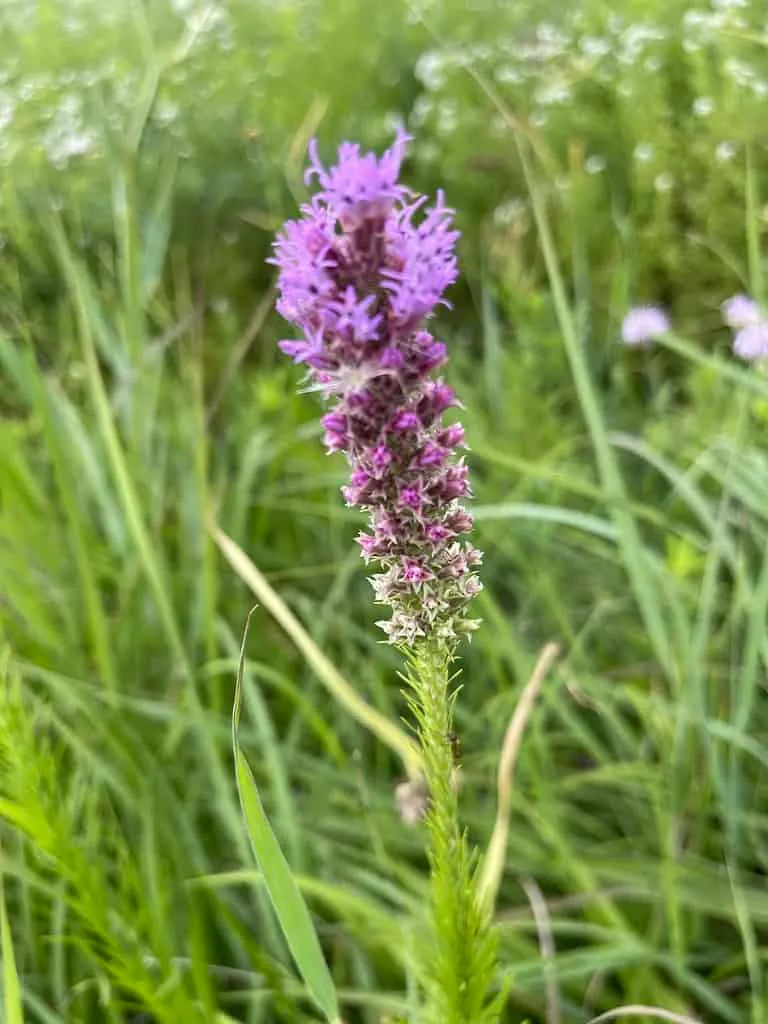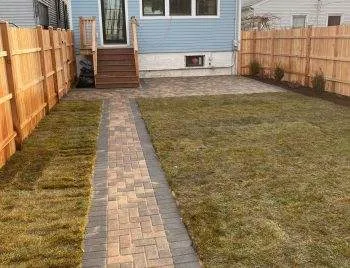Are you searching for ways to enhance the visual appeal and functionality of your residential or commercial property by implementing striking landscaping designs?
Look no further than R & G Almanza Landscape Inc, a family-owned and operated landscaping and construction company based in Skokie, IL. With over 20 years of experience, our company offers a wide range of services, including landscaping, fence installation, masonry, gardening, landscape design, lawn care, outdoor constructions, paving, snow removal, and tree services. In this article, we will take a closer look at landscape design and how it can enhance the appearance and value of your property.
Landscape design is the art and science of planning and arranging outdoor spaces to create a beautiful and functional environment. It involves the use of various elements, such as plants, trees, hardscapes, and water features, to create a cohesive and visually appealing outdoor space.
A skillfully planned and executed landscape plan not only raises the visual appeal of your property but also increases its overall value.
Benefits of Landscape Design
There are several benefits to having a well-designed landscape on your property, including:
1. Increased Property Value
A beautiful and well-maintained landscape can significantly increase the value of your property. In fact, studies have shown that homes with well-designed and maintained landscapes can sell for up to 20% more than homes without.
2. Improved Curb Appeal
A well-designed landscape can greatly enhance the curb appeal of your property, making it more attractive to potential buyers or visitors. A beautiful landscape can also make a great first impression and give your property a welcoming and inviting feel.
3. Environmental Benefits
A well-designed landscape can also have environmental benefits, such as reducing soil erosion, improving air quality, and providing habitat for wildlife by incorporating native plants and creating a balanced ecosystem.
4. Increased Enjoyment
A well-designed landscape can provide you and your family with a beautiful outdoor space to enjoy. Whether it's a cozy patio or a spacious lawn, a well-designed landscape can provide a relaxing and enjoyable space for you to spend time in.
Homeowners and property managers (residential, commercial and municipal) are becoming more and more aware of these benefits, as shown by the healthy growth rate of the landscaping and landscape architecture industry.

Working with a Landscape Designer
Working with a professional landscape designer in Chicago can help you achieve your landscaping goals and create the outdoor space of your dreams. Here are some things to keep in mind when working with a landscape designer:
1. Define Your Goals
Before meeting with a landscape designer, it's important to define your goals for your outdoor space. Do you want a space for entertaining guests or a peaceful retreat for relaxation? Defining your goals will help the designer understand your vision and create a design that meets your needs.
2. Consider Your Budget
It's important to consider your budget when working with a landscape designer. Be upfront and honest about your budget so that the designer can create a design that meets your needs and stays within your budget.
3. Communication is Key
Communication is key when working with an outdoor space designer. Be sure to clearly communicate your needs and desires for your outdoor space, and don't be afraid to ask questions or provide feedback throughout the design process.
4. Trust Your Outdoor Space Designer
A professional landscape designer has the knowledge and expertise to create a beautiful and functional outdoor space. It is imperative to choose someone that you are comfortable working with and whom you can trust and allow them to guide you through the design process.
The Role of a Designer
A landscape designer's primary role is to create a design that meets the client's needs while also being functional, sustainable, and aesthetically pleasing. The designer works with the client to develop a design that includes plant selection, hardscaping, outdoor structures, and lighting. The designer also considers factors such as drainage, soil conditions, and the existing landscape.
Plant Selection
One of the most crucial aspects of landscape design is plant selection. A landscape designer must have a thorough understanding of plant species, their growth habits, and their specific needs. The designer selects plants based on the client's preferences, site conditions, and the overall design aesthetic. Native plants are often used as they require less maintenance, are adapted to local conditions, and attract local wildlife.
Hardscape Design
Hardscaping involves the use of hard materials such as stone, concrete, and wood to create functional outdoor spaces. A hardscape designer incorporates hardscaping elements such as retaining walls, walkways, patios, and outdoor kitchens to enhance the overall design aesthetic and functionality of the space.
Outdoor Structures
Outdoor structures such as pergolas, gazebos, and arbors can add a unique architectural element to an outdoor space. A landscape designer can incorporate these structures into the design, creating a focal point and providing a shaded area for relaxation or entertainment. They can also help to increase your safety and privacy by building structures such as fences or by providing services such as landscape lighting.
Lighting
Outdoor lighting is an essential element of landscape design. A landscape designer can incorporate lighting fixtures such as path lights, uplights, and spotlights to highlight architectural features and create a warm and inviting atmosphere.
The Skills Required
To become successful landscape project manager, one must possess a unique combination of skills and knowledge. These skills include:
Knowledge of Horticulture
A garden designer must have a thorough understanding of plant species, their growth habits, and specific needs. They should be able to select plants that are adapted to the local environment and complement the overall design aesthetic.
Creativity and Design Skills
Landscape design is a creative process that requires the ability to envision and create aesthetically pleasing outdoor spaces. A landscape consultant must have a keen eye for design and be able to develop innovative solutions to design challenges.
Technical Skills
Landscape designers must be proficient in the use of design software and technology. They should have a good understanding of hardscape construction techniques and materials and be able to create accurate and detailed landscape plans.
Communication Skills
Landscape designers must be able to communicate effectively with clients, contractors, and other professionals. They should be able to translate their vision into a comprehensive plan and communicate that plan to all stakeholders involved in the project.
Choosing A Landscape Designer
If you're looking for a reliable and professional landscaping company to help you with your outdoor space, look no further than R & G Almanza Landscape Inc. With over 20 years of experience and a top-rated customer service, you can trust that R & G Almanza Landscape Inc will deliver high-quality work at a fair price. From landscape design to lawn care and tree services, R & G Almanza Landscape Inc offers a wide range of services to meet your needs.
The Landscape Design Process
The landscape design process involves several steps, including:
1. Site Analysis
The first step in the landscape design process is a site analysis. This involves evaluating the existing conditions of your property, such as the topography, soil type, and existing vegetation. The site analysis helps the designer understand the strengths and limitations of the site and identify opportunities for improvement.
2. Design Concept
Once the site analysis is complete, the designer will develop a design concept based on your goals and preferences. The design concept will include a layout of the outdoor space, including the placement of hardscapes, plants, and other features. This takes the form of a 3D design, which is an exceptional way for you to double check everything before the budget is allocated and which also allows you to decide whether the finished project will look just as you envisioned it.
3. Design Development
Once the design concept is approved, the designer will move on to the design development phase. This involves refining the design and selecting specific plants and materials for the project. Any changes (if applicable) are also accounted for in this step.
4. Installation
Once the design is finalized, the installation phase begins. This involves the actual construction of the landscaping plan, including the installation of hardscapes, planting of vegetation, and installation of water features.
5. Maintenance
Once the installation is complete, the final step is maintenance. Proper maintenance is essential to ensure that your landscape design continues to look beautiful and thrive. This includes regular watering, pruning, and fertilization.
6. Repairs
By selecting the best materials and installation techniques, garden designers can minimize the need for repairs, at least for an extend period of time. However, in the case they become necessary, it is important that they know what to check for and how to efficiently fix any issues. A landscape contractor that is already familiar with the project, your yard's layout and elements can quickly and affordably repair any features in your yard.

A well-designed landscape can greatly enhance the aesthetic appeal and value of your property.
Working with a professional landscape designer, such as R & G Almanza Landscape Inc, can help you achieve your landscaping goals and create the outdoor space of your dreams. With over 20 years of experience and a top-rated customer service, R & G Almanza Landscape Inc is the perfect choice for all your landscaping needs.
FAQs
What is landscape design?
Landscape design is the art and science of planning and arranging outdoor spaces to create a beautiful and functional environment.
What are the benefits of landscape design?
The benefits of landscape design include increased property value, improved curb appeal, environmental benefits, and increased enjoyment.
What is the landscape design process?
The landscape design process involves site analysis, design concept, design development, installation, and maintenance.
How do I work with a landscape designer?
When working with a landscape designer, define your goals, consider your budget, communicate clearly, and trust your designer.
Why should I choose R & G Almanza Landscape Inc for my landscaping needs?
R & G Almanza Landscape Inc has over 20 years of experience and a top-rated customer service, ensuring that you receive high-quality work at a fair price.
What are some common mistakes to avoid when designing a landscape?
Two common mistakes to avoid when designing a landscape are not budgeting properly and failing to communicate clearly with your designer. Other mistakes include not considering the local climate and soil conditions, neglecting to incorporate sustainability and eco-friendliness, over- or under-utilizing space, and failing to plan for maintenance and upkeep. To avoid these mistakes, it's important to work with an experienced landscape designer who can help you create a realistic budget and communicate clearly throughout the design process.





You must be logged in to post a comment.